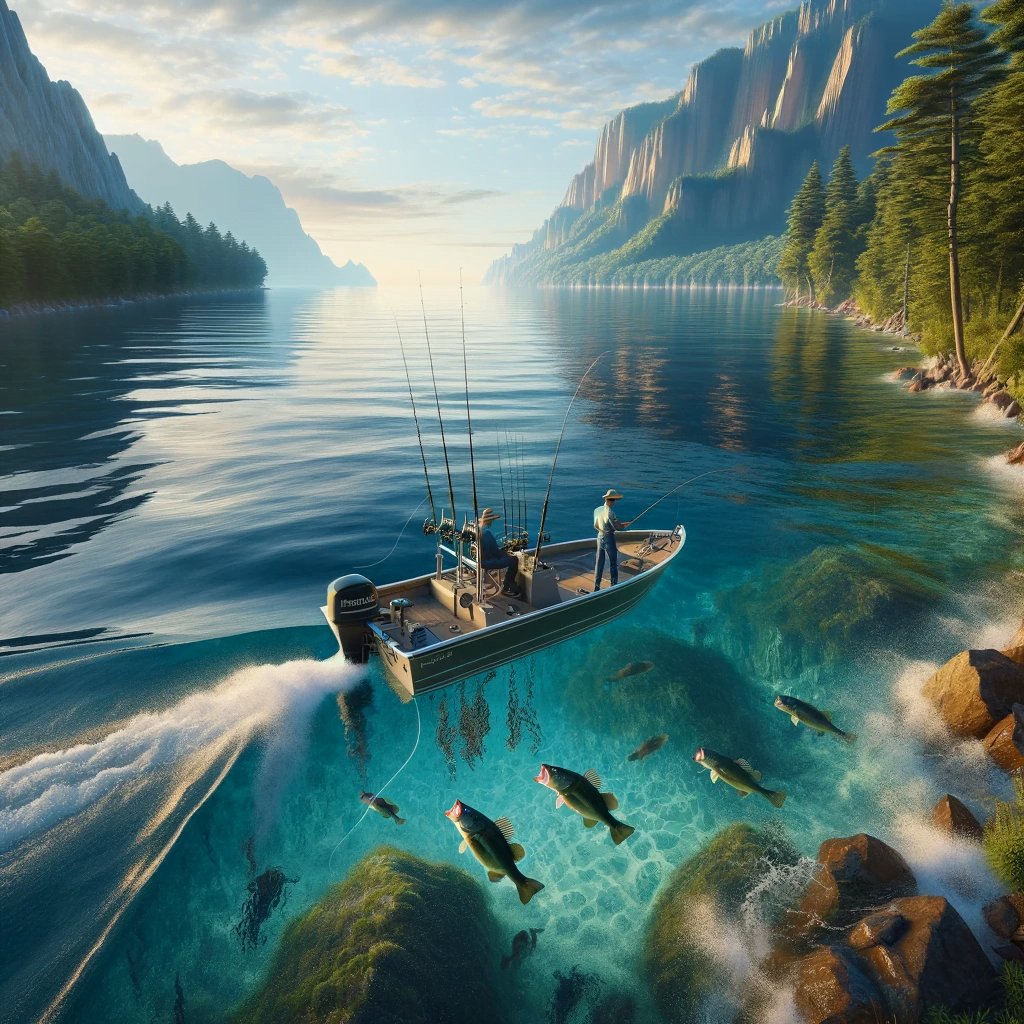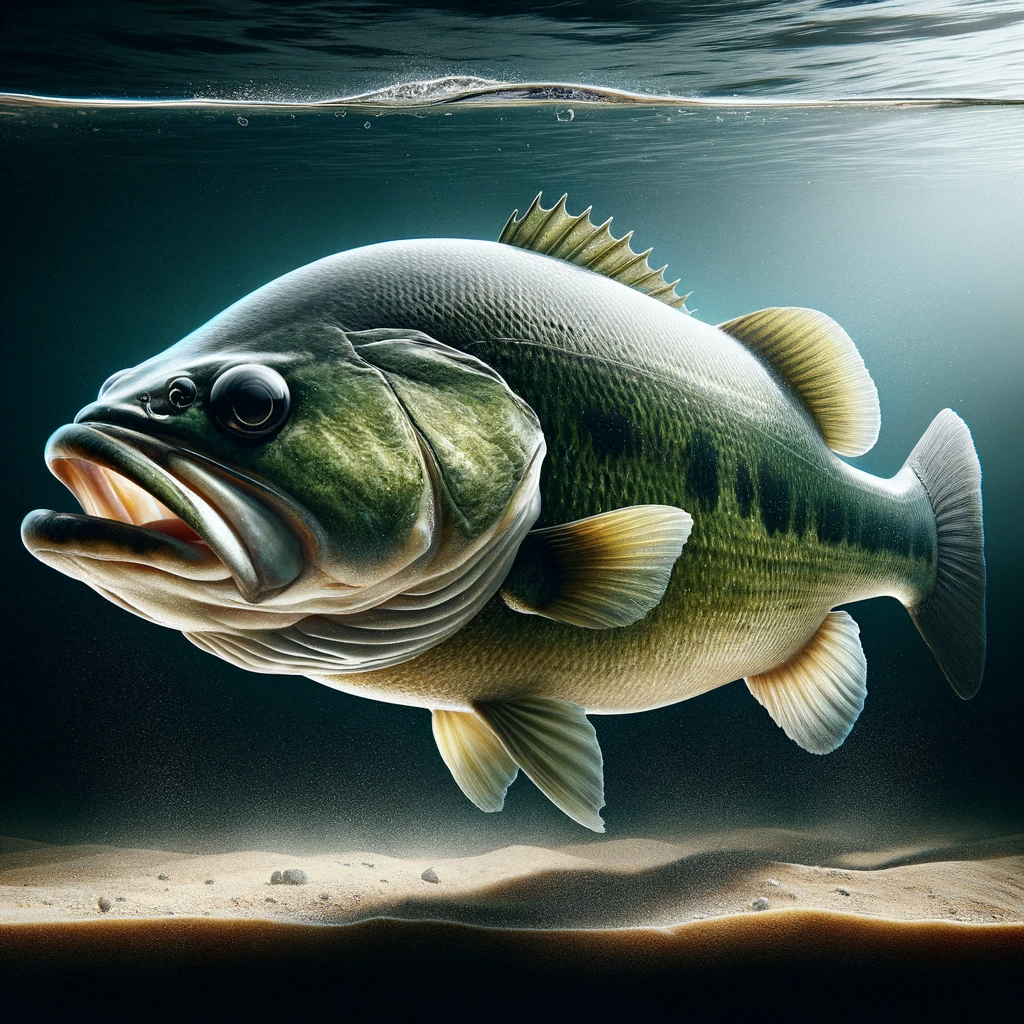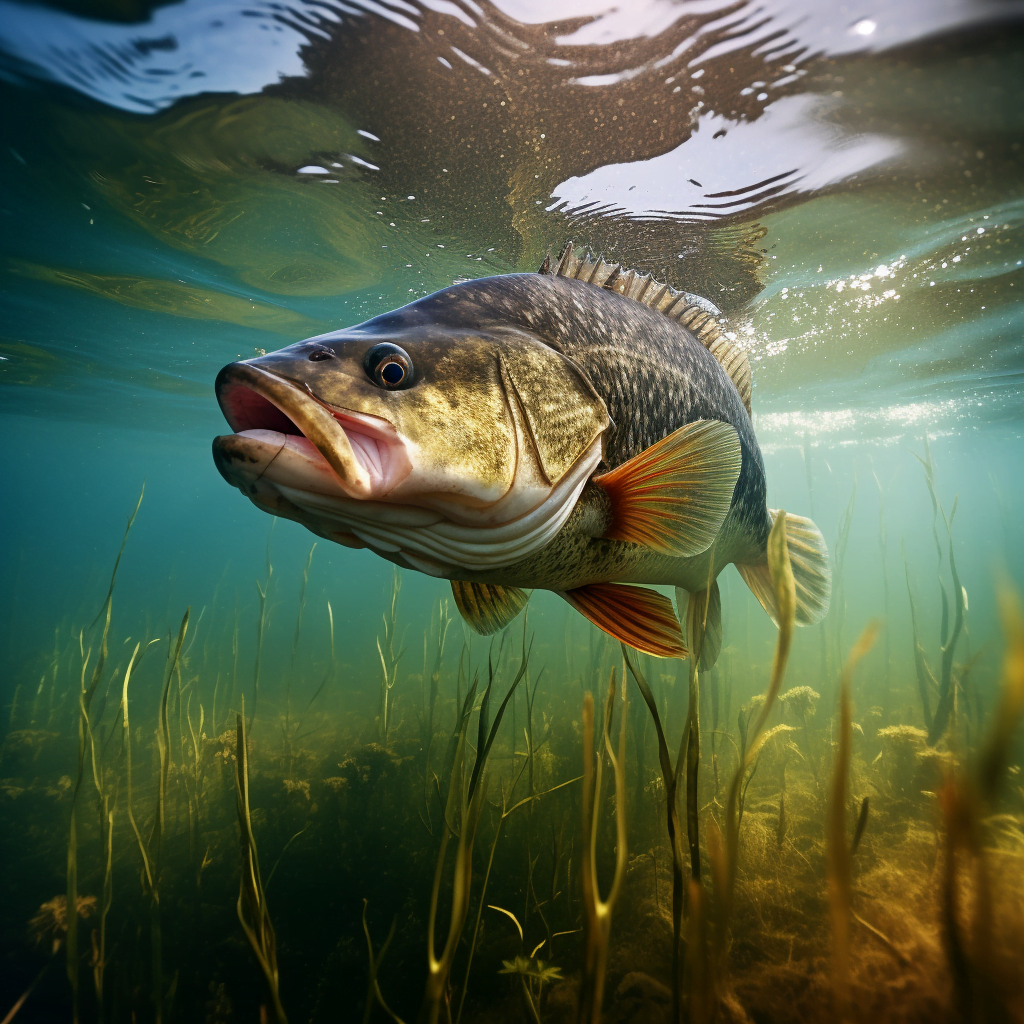
Overview of Largemouth Bass Habitat in Lake Michigan
As one of the five Great Lakes located in North America, Lake Michigan offers excellent habitat for largemouth bass. This versatile species thrives in the warmer, shallower regions of the lake where there is ample cover and forage. Although found lakewide, largemouth bass tend to congregate in certain prime locations.
Largemouth bass prefer weedy, vegetated areas in depths of 10 feet or less. The weeds provide ambush cover to attack prey and also harbor small baitfish and other forage. Shallow bays, harbors and the mouths of tributaries will often have weed growth that attracts largemouth bass. They also gravitate towards wood structure such as fallen trees, submerged branches, docks and piers. The wood offers shade and protection in addition to acting as a current break. It also tends to attract algae and small fish.
Some of the best largemouth bass habitat on Lake Michigan is found along southern shoreline areas. Here, river inflows like the Fox, Grand and St. Joseph introduce warmer water that raises the nearshore temperatures. Many powerplant discharges along the south coast also warm up local areas. The warmer water accelerates weed growth and baitfish activity, two keys to great bass fishing. While Lake Michigan gradually gets colder as you move northward, there are still ample areas that support healthy largemouth populations. Tributary mouths, harbors and shallow weed flats exist along even the most northern reaches of Lake Michigan.
In terms of weather and seasons, spring and fall tend to offer the most comfortable conditions and moderate water temperatures preferred by largemouth bass in Lake Michigan. They become more active as they prepare for spawning in the spring and as they feed heavily before winter arrives. That said, largemouth bass can be caught during all four seasons. Just adjust your tactics and locations accordingly. For example, concentrate on warmer harbor areas and powerplant discharges in the winter. Move to the warmest shallows and weed flats in the heat of summer.
No matter when you fish, make sure to pay close attention to the weather. Largemouth bass tend to bite best under overcast skies or when a storm front is approaching. The lower light and barometric pressure gets them on the prowl. Winds blowing into shore also excite them by pushing baitfish and nutrients into the shallows. Time your trips around fronts and winds for the best shot at success. Of course safety should be the number one consideration if the weather gets severe. Largemouth bass will still be there after the storm passes!
The Best Shoreline Fishing Spots for Largemouth Bass
One of the great things about Lake Michigan is the vast amount of shoreline access available. Anglers without a boat can still reach productive bass habitat from shore. Here are some of the top shore fishing hotspots to target largemouth bass:
Waukegan Harbor (Illinois) – This busy harbor located just south of the Wisconsin border offers excellent largemouth bass habitat. The warm water discharge from the nearby powerplant attracts large amounts of baitfish, which in turn draws in big bass. Target the warm water outlet itself or fish around the extensive weed beds that proliferate in Waukegan Harbor. The dozens of docks in the marina area also hold largemouth bass. Casting jigs, soft plastics and suspending jerkbaits around the wooden piers and boat slips will draw strikes. Early morning or night are good times to fish the docks.
Burns Waterway Small Boat Harbor (Indiana) – Bordering Lake Michigan in Porter County west of Michigan City, this harbor offers shore anglers excellent largemouth bass opportunities. There are expansive weed beds both inside and at the mouth of the harbor. Target any pockets or channels in the weeds, especially areas with submerged wood or other cover. Slow rolling spinnerbaits over the top of the weeds is a good search technique here. When you find an active group of largemouth bass, slow down and thoroughly work the area with plastic worms, creature baits or jigs. Focus on the transitions between the sandy bottom and weeds for bites.
Grand Haven Pier and Shoreline (Michigan) – Grand Haven is a popular tourist town located where the Grand River enters Lake Michigan. The iconic pier and shoreline area surrounding it offer shorebound anglers a great shot at largemouth bass, especially early and late in the day. The shallow, sandy areas warm quickly and attract baitfish, which in turn bring in the bass. Target the weedy areas and fish parallel to shore, using buzzbaits, spinnerbaits and shallow diving crankbaits. Also pay close attention to any wood structure or rock piles which provide cover. During the day, fish deeper crankbaits in 10-15 feet of water just outside the pier.
Milwaukee Harbor (Wisconsin) – With its long harbor walls and extensive marina filled with docks, Milwaukee is a shore angler’s paradise. The many finger piers, boat slips, and support pilings provide perfect ambush points for largemouth bass hunting prey. Using jerkbaits, crankbaits and suspending stickbaits that mimic injured baitfish will draw vicious strikes from bass hiding in and around the docks. The many patches of weeds in the harbor also hold fish. Retrieve weedless rigged soft plastics through the vegetation and work slowly, keeping contact with the weeds to tease out any lurking lunker bass.

Top Areas for Boat Fishing for Largemouth Bass
Having access to a boat opens up many more options for largemouth bass fishing on Lake Michigan. Here are some of the top spots to target from an offshore boat:
Fox River Inlet (Wisconsin) – Situated just south of Green Bay, the mouth of the Fox River attracts largemouth bass in sizable numbers. The warmer river water flows into the lake, creating the perfect intersection of baitfish and aggressive bass. Target the mouth itself as well as adjacent shoreline areas that also warm quickly in the sun. Weedbeds, docks and wood structure around the Green Bay shoreline often hold nice largemouth bass as well. Troll crankbaits or cast various rigs to shoreline targets.
Pike Creek (Michigan) – Halfway up the western shoreline of Michigan is the small mouth of Pike Creek. But despite its small size, this creek holds big largemouth bass thanks to an abundant forage base of goby fish. Use spinnerbaits, chatterbaits and imitation goby soft plastic baits in natural colors to mimic this prolific food source. The largemouth bass grow big and mean in Pike Creek gorging on gobies, so be prepared for a strong fight once hooked up.
St. Joseph River (Michigan) – The St. Joseph River in southwest Michigan offers some of the most productive bass fishing on Lake Michigan. The warm river water creates a prime largemouth bass environment as it flows into cooler Lake Michigan near St. Joseph and Benton Harbor. Concentrate efforts where the river enters the big lake around the river mouth and any associated wetlands or backwater areas. Wood, weeds, docks and other structure hold bass waiting to ambush prey. Slowly fish jig head tubes, creature baits and weighted soft plastic craw profiles along the bottom for success.
Muskegon Lake and River (Michigan) – On the eastern side of Lake Michigan, Muskegon Lake connects with the main lake via a navigable channel. The lake, river and channel all provide phenomenal largemouth bass habitat. The many downed trees, flats, channels and abundant vegetation give bass everything they need to thrive. Use your electronics to find fish-holding structure and target it thoroughly with spinnerbaits, vibrating jigs, wacky rigs and soft plastic craws. Allow baits to sink to the bottom and crawl them slowly along, mimicking crayfish.
Best Techniques for Catching Largemouth Bass
To maximize your chances with largemouth bass on Lake Michigan, follow these key techniques regarding seasons, time of day, weather, lures and presentation:
Time of Year – Spring and fall are considered the prime times to fish for largemouth bass on Lake Michigan. In spring, the bass are hungry and aggressively feeding up in preparation for the spawn. Post-spawn in early summer can also be productive. Come fall, bass go on a major feeding binge to bulk up ahead of winter. But don’t rule out fishing in the summer and winter as well. Just concentrate efforts in the warmest, most productive areas during the most extreme weather.
Time of Day – Generally the mornings and evenings are best for largemouth bass fishing. At dawn and dusk bass move up shallower to hunt and are more active. Night fishing under lights around docks can also be extremely productive. During really hot summer weather, the midday bite dies so focus on early morning trips. In cooler months, the afternoon bite picks up so fish later in the day. Overcast, drizzly days are also prime times to fish.
Weather Conditions – As mentioned, overcast skies and approaching storms often spur the best largemouth action by lowering light levels and barometric pressure. Winds can also help by blowing prey towards ambush points and oxygenating
the water. Try to schedule trips right before a cold front arrives or directly after a front passes and the water begins to stabilize. During periods of stable high pressure the bite can be tougher, so pay close attention to weather trends for the best fishing.
Lures and Presentation – Lake Michigan largemouth bass will strike a wide variety of lures and baits depending on conditions, seasons and locations. Here are some top producers:
- Crankbaits – Shallow divers for shoreline bass, deep divers over offshore structure
- Spinnerbaits – Cover water and elicit reaction strikes in all depths
- Buzzbaits – Agitate the surface early morning and low light periods
- Plastic Worms – Rig Texas-style, Carolina or wacky for finesse fishing
- Creature Baits – Flipping jigs for heavy cover and vegetation
- Jigs – Paired with trailers like craws or creatures around wood
- Topwater Lures – Poppers, stickbaits, prop baits for explosive surface strikes
- Jerkbaits – Suspending models for a subtle presentation
- Bladed Jigs – Chatterbaits and vibrating jigs around grass and rock
- Swimbaits – Imitate injured baitfish with steady retrieve
In order to draw strikes, present lures in ways that mimic injured or vulnerable prey. Vary retrieves until you find what speed and action triggers fish that day. Let lures crash into weeds, deflect off wood, and bump bottom to imitate crayfish. Aggressive and erratic movements often work best. When you find actively biting fish, slow down and thoroughly work the area to catch multiple bass.
Pay close attention to where bass are holding on your fish finder and target them with precise, vertical presentations. But also make long casts to search productive shoreline spots. Switch upretrieval speeds, cadences, and depth until you dial in what triggers fish to strike on a given day or location. Adaptability and versatility are key to consistently catching Lake Michigan largemouth bass.

Other Tips and Considerations
Here are some additional tips to make your Lake Michigan largemouth bass fishing trips more successful and enjoyable:
Know the Regulations – Largemouth bass fishing regulations vary between the four states bordering Lake Michigan. Be sure to check the specific rules for each area you’ll be fishing including size limits, creel limits and season dates. There are hefty fines for keeping undersized or too many bass!
Get Proper Licensing – You must have a valid fishing license for each state you’ll be fishing in. Some states offer specialized licenses just for Great Lakes fishing as well. Consider getting the licenses online ahead of time for convenience.
Find Boat Launches – Use public boat ramps at state parks, municipal harbors, and marinas to access top largemouth waters. Having navigation maps or GPS units can help locate them.
Watch the Weather – The vast size of Lake Michigan makes it susceptible to quickly forming large waves and hazardous conditions, especially in fall. Check forecasts and stay aware of changing winds and storms.
Bring Safety Gear – When boating, always have U.S. Coast Guard approved life jackets or PFDs. Also pack flares, first aid, extra clothing, and other emergency items.
Practice Catch and Release – Carefully release largemouth bass under 16 inches per most regulations. Use barbless hooks, minimize fight time, and release fish without removing them from the water when possible.
Final Thoughts
Lake Michigan offers world-class opportunities to catch largemouth bass and top-notch fishing action. Whether you fish from shore or by boat, target the warmest harbor areas and river inflows with ample vegetation, wood and shallow structure. Adjust your fishing methods to the seasonal patterns and varied conditions that Lake Michigan presents. With persistence and adaptability, you’ll discover incredible largemouth bass fishing on this expansive Great Lake.




